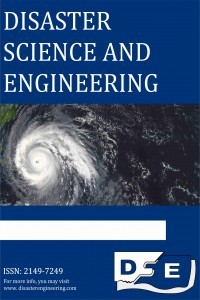Long Period Seismic Waves Developed at Local Distances
Long Period Seismic Waves Developed at Local Distances
Long period sesimic waves near field, far source, Marmara Region,
___
- Ambraseys, N. (2002). The seismic activity of the Marmara Sea region over the last 2000 years. Bulletin of the Seismological Society of America, 92(1), 1-18.
- Bayrakci, G., Laigle, M., Bécel, A., Hirn, A., Taymaz, T., Yolsal-Cevikbilen, S., & Team, S. (2013). 3-D sediment-basement tomography of the Northern Marmara trough by a dense OBS network at the nodes of a grid of controlled source profiles along the North Anatolian fault. Geophysical Journal International, 194(3), 1335-1357.
- Beck, J. L., & Hall, J. F. (1986). Factors contributing to the catastrophe in Mexico City during the earthquake of September 19, 1985. Geophysical Research Letters, 13(6), 593-596.
- Celebi, M., Prince, J., Dietel, C., Onate, M., & Chavez, G. (1987). The culprit in Mexico City—amplification of motions. Earthquake spectra, 3(2), 315-328.
- Gurbuz, C., Aktar, M., Eyidogan, H., Cisternas, A., Haessler, H., Barka, A., Kuleli, S. (2000). The seismotectonics of the Marmara region (Turkey): results from a microseismic experiment. Tectonophysics, 316(1), 1-17.
- Koketsu, K., Hatayama, K., Furumura, T., Ikegami, Y., & Akiyama, S. (2005). Damaging long-period ground motions from the 2003 M w 8.3 Tokachi-oki, Japan earthquake. Seismological Research Letters, 76(1), 67-73.
- Koketsu, K., & Miyake, H. (2008). A seismological overview of long-period ground motion. Journal of Seismology, 2(12), 133-143.
- Okay, A. I., Kaşlılar-Özcan, A., Imren, C., Boztepe-Güney, A., Demirbağ, E., & Kuşçu, İ. (2000). Active faults and evolving strike-slip basins in the Marmara Sea, northwest Turkey: a multichannel seismic reflection study. Tectonophysics, 321(2), 189-218.
- Smith, A. D., Taymaz, T., Oktay, F., Yüce, H., Alpar, B., Başaran, H.,Şimşek, M.(1995). High-resolution seismic profiling in the Sea of Marmara (northwest Turkey):Late Quaternary sedimentation and sea-level changes. Geological Society of America Bulletin, 107(8), 923-936.
- Yayın Aralığı: Yılda 2 Sayı
- Başlangıç: 2015
- Yayıncı: Emrah DOĞAN
Effetcs of Near-Fault and Far-Fault Ground Motions on Cable-Stayed Bridges
Hayrettin Karaca, Kurtuluş Soyluk
PINAR KIRÇIN, SAYE ÇABUK, KÜRŞAT AKSOY, ALPER ÇABUK
Seismic Characterization of the Blast Occured In Istanbul (Turkey) by the end of 2016
Hamdullah LİVAOĞLU, Evrim YAVUZ, Fadime SERTÇELİK, Tahir Serkan IRMAK, İbrahim SERTÇELİK, Cengiz KURTULUŞ
Long Period Seismic Waves Developed at Local Distances
Esra Kalkan Ertan, Ali Pınar, Ümit Dikmen
2011 Van Earthquakes: Design vs Construction
